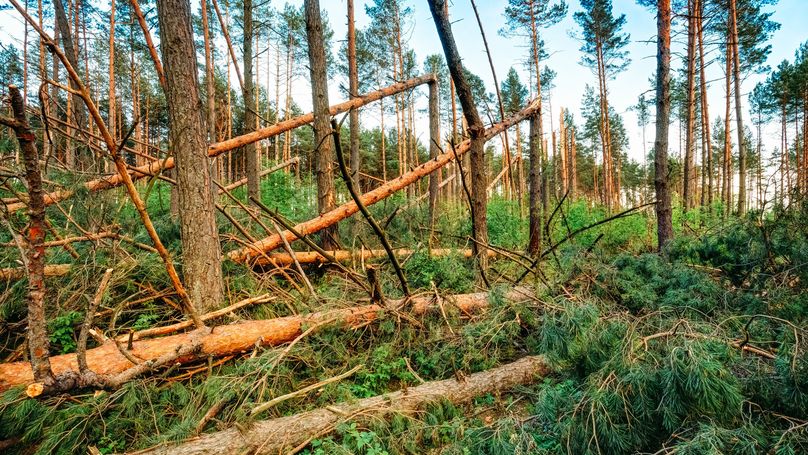Almost all landowners will have their woodlands included on their public liability insurance to protect against claims from members of the public using these areas.
However, there are also specific ‘woodland’ insurance policies available from a small number of specialist providers. So what can be covered through these policies and how can you tailor them to get maximum benefits without paying over the odds?
Two main types of cover are available: fire and windblow.
Fire cover
Fire cover will pay out for damage caused to trees by wildfires or arson. It will not cover any damage caused by a ‘controlled’ fire on the policy holder’s land becoming an ‘uncontrolled’ fire. However, a neighbour’s muirburn which gets onto the policyholder’s property would be covered.
Fire is generally a more significant risk to young trees which can become completely engulfed and are more likely to die, whereas mature trees can survive quick moving fires and are more likely to be left with at least part of the crown alive.
Fires can also have an impact on infrastructure such as deer fences, which needs to be considered when calculating the insured value. Some policies will also pay for firefighting costs, including helicopters, if they are deemed necessary by the fire officer in charge. Fire cover is generally relatively inexpensive, however it can also be targeted by only covering the most “at risk” woodlands. These would generally be:
- young plantations,
- woodlands in and around towns, particularly where there is a history of incidents of arson,
- woodlands immediately adjacent to muirburnhills.
Windblow cover
Damage caused by wind is called windblow. Windblow insurance is designed to protect landowners from the loss of income caused by large scale windblow events. There is usually a minimum claim value so these policies are only really designed for significant windblow areas, not individual trees or small pockets.
With modern harvesting machinery, windblown timber can be harvested and brought out to sale but it may still lose value in a variety of ways:
- the working costs of windblow are higher than normal,
- windblow timber can be split and twisted so it may be downgraded from log quality to chip quality,
- windblown timber may be premature so there is a loss of the additional value and weight it would have added if it had grown to commercial maturity.
Most windblow policies are now designed so that the policyholder retains the value of the windblow timber when it is sold. The insurance payment is therefore a top-up which is designed to compensate for the value lost as outlined above. It may also pay something towards getting aerial photos of damaged areas and the management time spent in responding to windblow.
Young trees are generally not covered for windblow until they are 21 years old as they are not a significant risk. Some insurance providers also set an upper limit of 50 years old, however this can exclude commercial pine and fir plantations which are operating on longer rotations. It is worth checking with the insurer in advance to make sure that they cover an appropriate age range.
Growing conditions can have a significant impact on the risk of windblow. Woodlands at higher elevations and on waterlogged soils are more likely to be impacted. For inaccessible woodlands at high risk of windblow, it is worth factoring in the difficulty of re-establishing these woodlands when calculating an appropriate insurance value.
To get the best out of these policies it is important to tailor the insurance cover to the specific risks in each woodland. As these risks change through time it is important to review your insurance carefully each year. An up-to-date stock map is also vital to ensure that you can clearly identify any areas where you need to claim.
